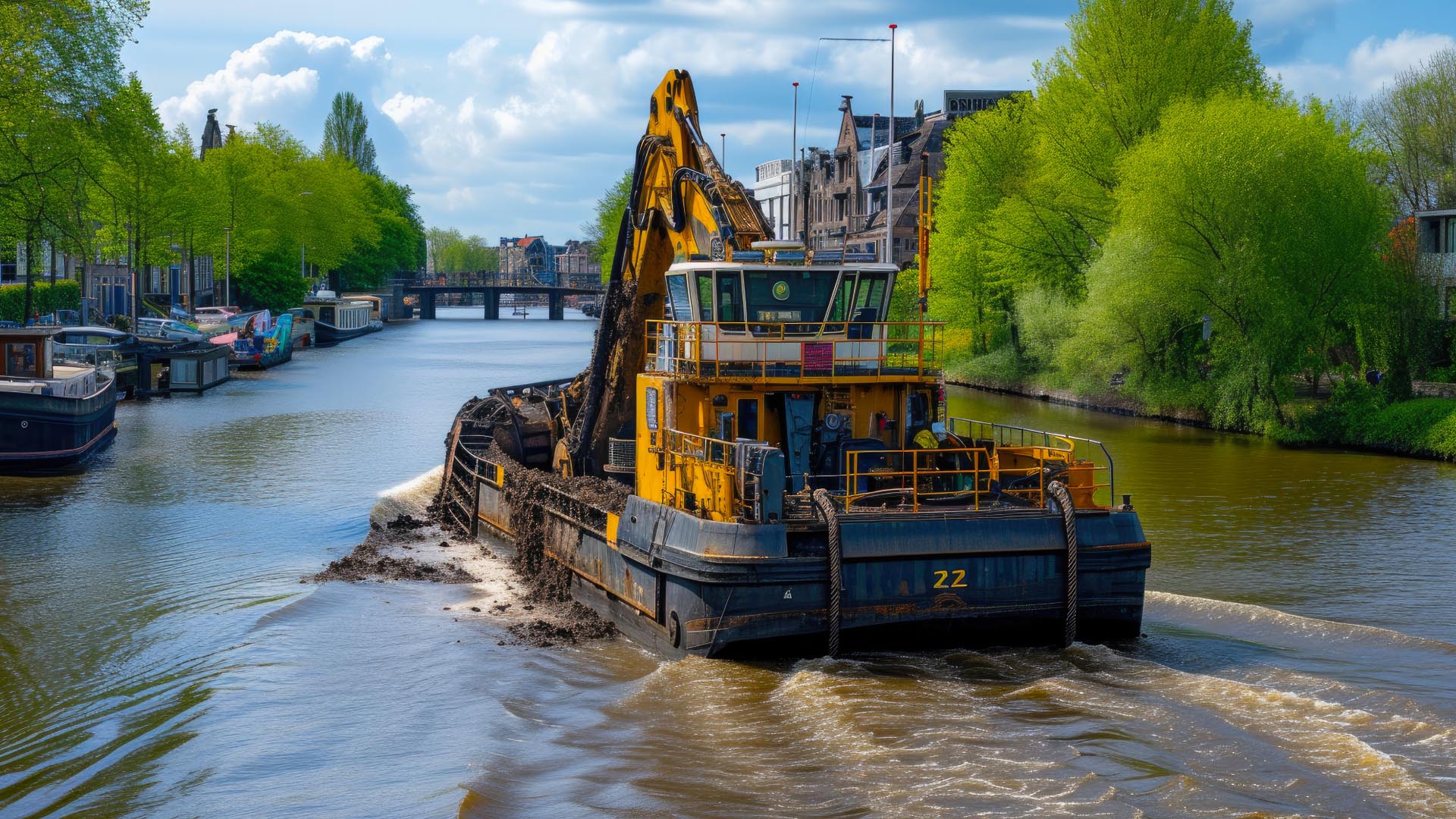1. Mechanical Dredgers
a. Bucket Dredgers
Bucket dredgers employ a series of buckets attached to a rotating chain to scoop material from the seabed. They are highly effective in hard-packed sediments and rocky substrates but less efficient in soft or loose materials. Boundary conditions for use include areas with limited underwater obstacles and environments where precision is required.
b. Grab Dredgers
Grab dredgers utilize a clamshell bucket to excavate material. This type is suitable for harbor maintenance, pipeline excavation, and removing debris. They are most effective in localized areas and can handle both soft and compacted materials. Their use is limited in very deep waters and strong currents.
2. Hydraulic Dredgers
a. Cutter Suction Dredgers (CSDs)
CSDs have a rotating cutter head at the suction inlet to loosen material, which is then pumped through a pipeline to the designated location. These dredgers are versatile and can handle various materials, from soft mud to hard rock. Boundary conditions include stable anchorage points and the ability to lay long discharge pipelines.
b. Hopper Dredgers
Hopper dredgers collect dredged material in a large onboard hopper for transport to disposal or reclamation sites. They are highly efficient for large-scale projects and suitable for open water areas. Limitations include operational challenges in shallow waters and narrow channels.
3. Other Types of Dredgers
a. Jet-Lift Dredgers
Jet-lift dredgers use high-pressure water jets to dislodge sediment, which is then transported by a suction pipe. They are effective in loose, unconsolidated materials and environmentally sensitive areas due to minimal disturbance. However, they are less efficient in compacted or rocky substrates.
b. Air-Lift Dredgers
Air-lift dredgers operate by injecting compressed air into a pipe, creating a suction effect that lifts material. These are suitable for deep-sea mining and underwater archaeology. Their boundary conditions include clear water environments, as turbidity can significantly reduce efficiency.
State-of-the-Art Dredging and Reclamation Techniques Including Environmental Measures
1. Advanced Dredging Techniques
a. Precision Dredging
Precision dredging involves the use of advanced positioning systems and automated controls to ensure accurate excavation and minimal disturbance to surrounding areas. Techniques such as GPS-guided dredging and real-time monitoring allow for precise operations, reducing the environmental impact.
b. Hybrid Dredging
Combining mechanical and hydraulic dredging methods, hybrid dredging adapts to varying site conditions and materials. This approach maximizes efficiency and effectiveness while minimizing the environmental footprint by selecting the most appropriate method for each section of the project.
2. Reclamation Techniques
a. Hydraulic Fill Reclamation
Hydraulic fill reclamation involves pumping dredged material into a designated area to create new land. This method is efficient and cost-effective, particularly for large-scale projects. It requires careful management of sediment composition and placement to ensure stability and environmental compliance.
b. Geotextile Tubes
Geotextile tubes are large, permeable fabric tubes filled with dredged material to form structures such as breakwaters or reclaimed land. They offer advantages in erosion control and environmental protection. Proper site assessment and engineering design are critical to the success of this technique.
3. Environmental Measures
a. Turbidity Control
To mitigate the impact of sediment plumes, silt curtains and other turbidity control devices are deployed. These barriers contain suspended sediments, preventing them from spreading and affecting marine life. Monitoring turbidity levels ensures compliance with environmental regulations.
b. Habitat Restoration
Incorporating habitat restoration into dredging projects helps offset environmental impacts. Techniques such as creating artificial reefs, restoring seagrass beds, and re-establishing wetlands enhance biodiversity and provide ecological benefits.
c. Sustainable Sediment Management
Sustainable sediment management involves the beneficial use of dredged materials, such as beach nourishment, habitat creation, and erosion control. This approach reduces waste and supports environmental conservation.
d. Eco-Friendly Dredging Technologies
The development of eco-friendly dredging technologies, such as electric-powered dredgers and low-emission engines, minimizes the carbon footprint of dredging operations. Implementing these technologies aligns with global efforts to combat climate change.
Conclusion
Dredging equipment and techniques have evolved significantly to meet the challenges of modern dredging and reclamation projects. By selecting the appropriate dredging equipment based on boundary conditions and incorporating state-of-the-art techniques, it is possible to achieve efficient and environmentally sustainable outcomes. Emphasizing environmental measures further ensures that dredging activities support ecological health and biodiversity, balancing economic and environmental interests.
